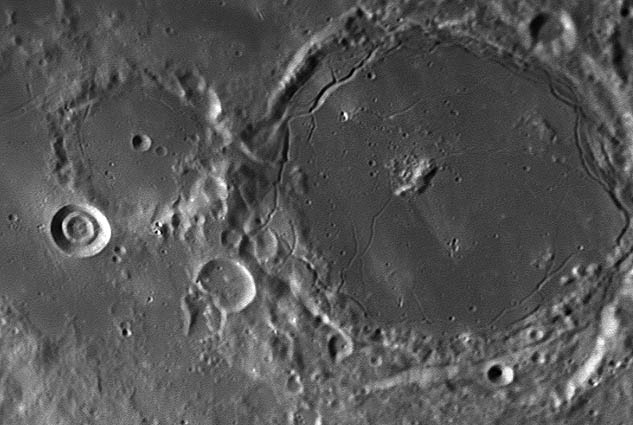December 17, 2015
Rings Within Rings
Originally published February 7, 2005
Image Credit: Wes Higgins |
|
Rings Within Rings The way a lunar crater looks is the result of its formation and all the modifications that have affected it since. When we look at 97 km wide Pitatus we can imagine that it originally looked like 93 km wide Copernicus, so it must have been significantly modified since its formation! What has happened to it? First, it is very shallow, so it must have been flooded with mare lava. And since the crater wall is not breached the lava must have risen up fractures inside the crater. Perhaps related to the eruption of the lava is the circle of rilles around the inside of the crater walls. Such rilles are characteristic of floor-fractured craters so we might even speculate that the floor of Pitatus is slightly uplifted, like Posidonius. The final event for Pitatus was the splating of secondary ejecta from Tycho that made the concentrated pits and associated downrange faint rays. A second chance to think how impact craters might be modified is provided by Hesiodus A, the sharp-rimmed crater to the left. This is one of the relatively rare lunar concentric craters which contain an inner donut-like ring concentric with the crater rim. If Hesiodus A started out as a normal impact crater (and its walls look very typical) it has been modified in a way we don't yet understand. Is the inner ring a result of uniform slumping of material down all sides of its walls? Or is it some subsequent eruption (like Pitatus' mare flooding), but of a viscous magma? And the three small hills that show in Wes' exceptional image - what caused them? I am glad there are still some mysteries for us to unravel! Technical Details: Related Links: Yesterday's LPOD: Alexander's Teacher Tomorrow's LPOD: What's Happening at Aestuum? |
|
Author & Editor: |
COMMENTS?
Register, Log in, and join in the comments.




